The Ford Everest range has been rejigged for 2026, with some variants and drivetrains removed, and prices nudged skyward across the large off-road SUV range.
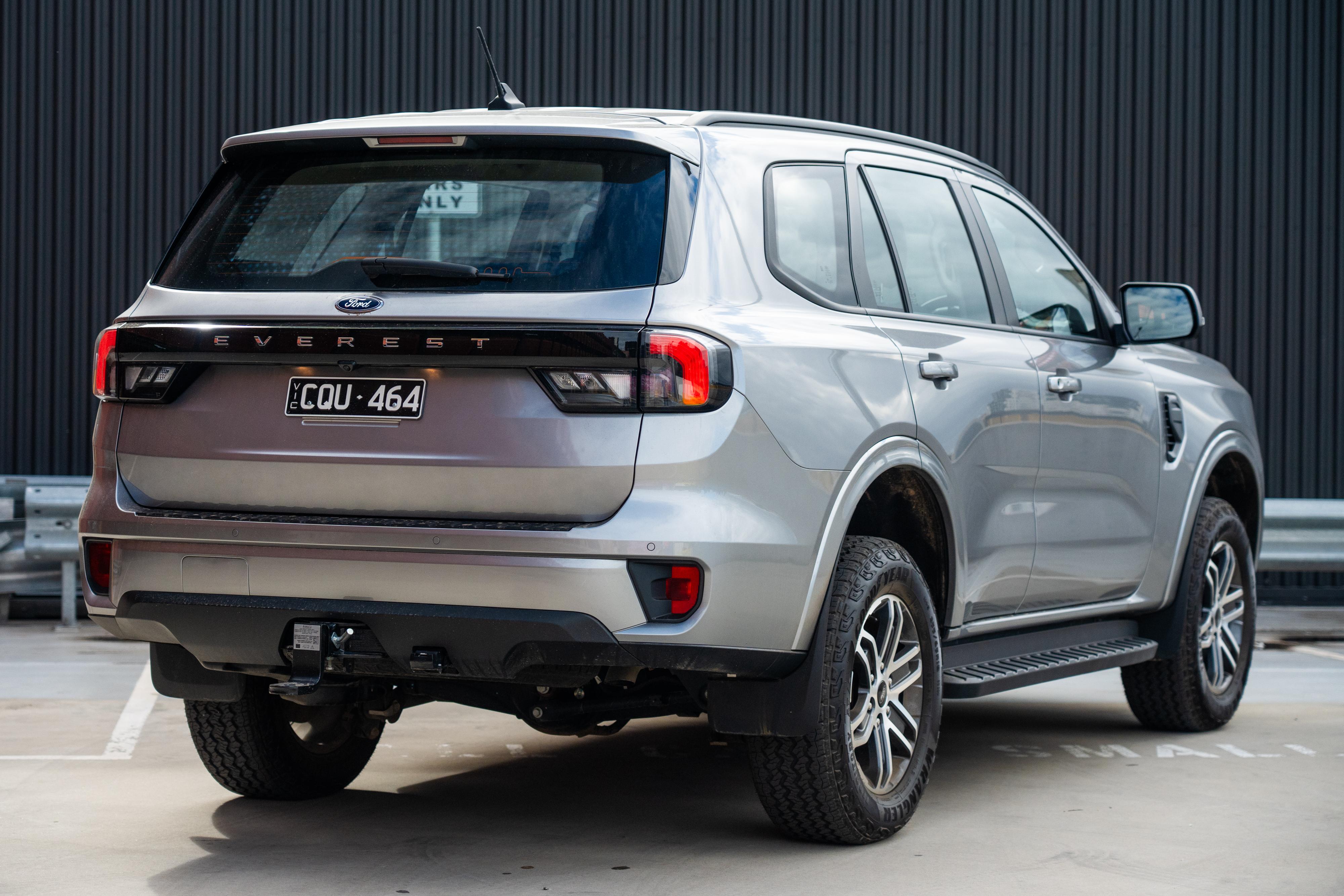
The biggest news is that rear-wheel drive variants have been discontinued, leaving the Everest available only as a more capable four-wheel drive vehicle. It’s still available for now, but Ford has announced it will soon also axe the four-cylinder bi-turbo diesel engine from both the Everest and the related Ranger ute lineups, in which it’ll be replaced by an upgraded single-turbo diesel four.
While these changes are designed to future-proof both Australian-developed models to meet tightening emissions regulations, the Everest Sport is now exclusively a V6 turbo-diesel variant as standard, though a limited run of 700 twin-turbo Sport vehicles remains available at dealerships before the engine disappears in 2026.
As far as permanent variants go, for now the bi-turbo engine is reserved for only the two cheapest grades, including the entry-level 2026 Ford Everest Ambiente 4×4 you see on test here.
Additionally, the limited-edition Everest Wildtrak and Black Edition models introduced earlier this year have almost entirely sold out.
The moves simplify the Everest range, which is now far more digestible than that of the Ranger, but it does mean there’s less choice than ever before, so it remains to be seen whether the big Ford will remain Australia’s top-selling large SUV, a title it claimed for the first time in 2024.
That said, there’s still a multitude of genuine Ford accessories and general customisation available for the Everest, and 4×2 variants were hardly that desirable, at least for non-commercial buyers. But with higher pricing, is the cheapest Everest 4×4 still a compelling package?
How much does the Ford Everest cost?
With 4×2 variants gone, our Ambiente 4×4 tester is now Australia’s most affordable Everest at $59,490 before on-roads – $250 more than it was at the start of 2025.
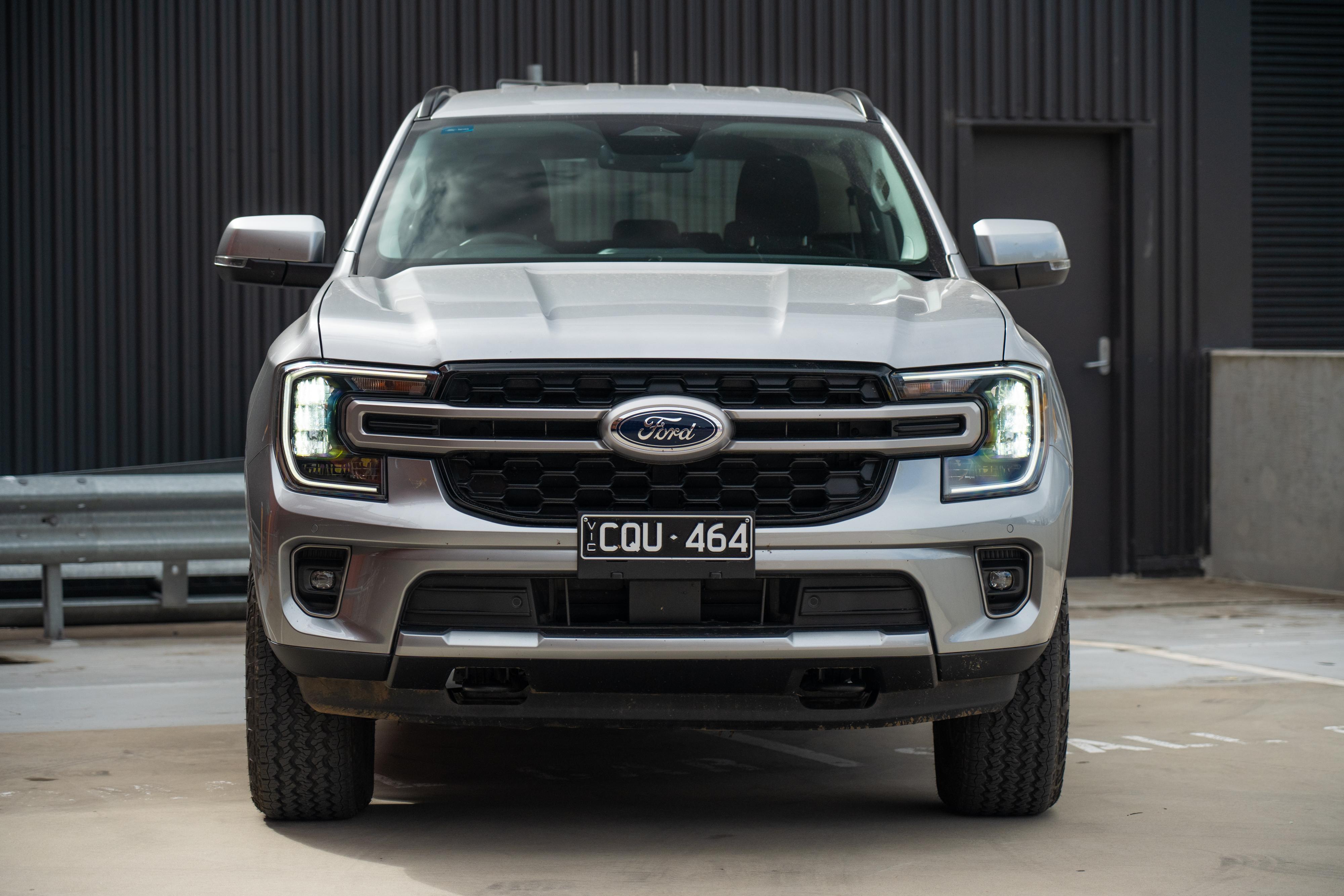
| Model | Price before on-road costs |
|---|---|
| 2026 Ford Everest Ambiente 4×4 bi-turbo | $59,490 |
| 2026 Ford Everest Trend 4×4 bi-turbo | $67,290 |
| 2026 Ford Everest Sport 4×4 V6 | $75,540 |
| 2026 Ford Everest Tremor 4×4 V6 | $77,490 |
| 2026 Ford Everest Platinum 4×4 V6 | $82,390 |
That’s consistent with price rises across the range, though the Platinum V6 flagship copped the steepest hike of $1190. The removal of Everest 4×2 grades also means the range’s starting point has jumped up by $5250.
Key rivals include the Isuzu MU-X, Toyota LandCruiser Prado, and GWM Tank 500. The MU-X range starts at $49,900 before on-roads for the base LS-M in 4×2 guise, though in more comparable 4×4 trim it’s priced at $55,900 before on-roads.
The Prado, meanwhile, stepped above the Everest’s price range with the launch of the new generation late last year, and it now starts at $72,500 before on-roads for the base GX. All Prados are four-wheel drive.
The Tank 500 is the Everest’s most threatening Chinese rival, and it starts at $64,490 drive-away for the four-wheel drive Lux Hybrid. Therefore, despite the 4×4-induced price jump, the base Everest is still in the ballpark.
To see how the Ford Everest stacks up against the competition, use our comparison tool
What is the Ford Everest like on the inside?
Ford’s simple interior design language – dominated by hard edges and simple shapes – translates well in this stripped-back Ambiente application, and it’s more liveable than most of the ladder-frame off-road SUV competition.

In fact, most of the elements that make this a base-spec model don’t actually seem that cheap in the metal. Things like a plastic steering wheel, a smaller screen, and cloth seats may not scream $60,000-plus when looking at a spec sheet, but what matters is how they look and feel behind the wheel.
Starting with the key touch points, that plastic steering wheel is surprisingly pleasant to hold. We certainly won’t argue that it doesn’t look a little second-rate, but it’s still soft enough not to feel scratchy.
It’s also adorned with large, easy-to-use physical buttons, which shouldn’t take too long to figure out for those unfamiliar with modern Fords, and you’ll find them refreshing in an interior that’s generally button-averse.
Likewise, the armrests aren’t exactly plush but won’t leave you with bruises either. Items like the seemingly leather-appointed gear selector and distinct Ford interior design elements break up the large swathes of scratchy black plastic nicely too.
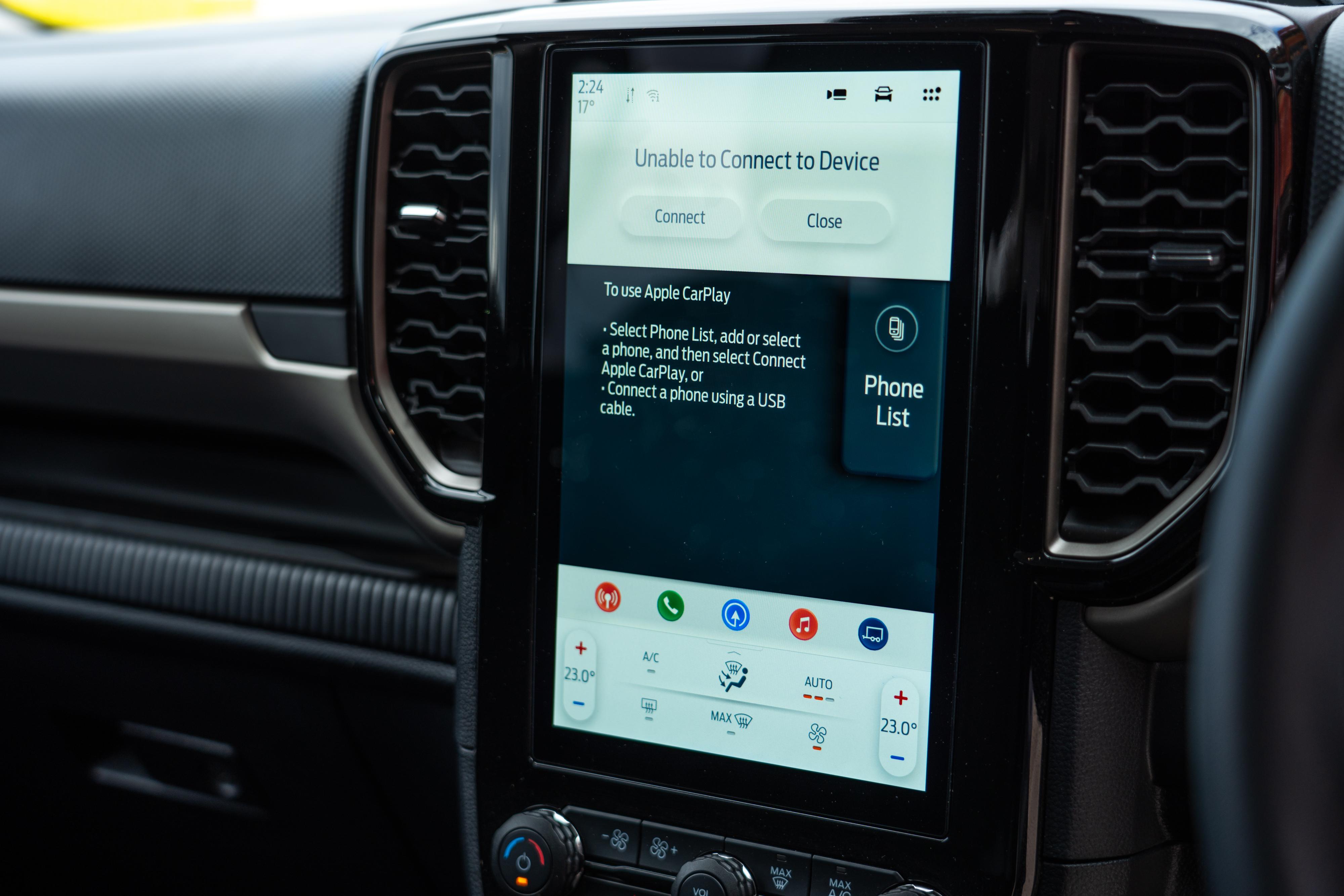

The more ‘luxurious’ reminders of the money you’ve spent come with the Everest’s mechanics (which we’ll delve into later) and its technology, as proudly demonstrated by the 10.1-inch portrait-style infotainment touchscreen.
Even in these images, this screen looks enormous. The knowledge that more expensive Everests are fitted with a larger 12.0-inch unit shouldn’t leave you with screen envy either, as functionality and aesthetics are practically identical, aside from slightly thinner bezels.
Here is where you control most of the vehicle’s functions, which is fortunate given the sharp graphics and snappy response times. In-car apps, cameras, settings, and climate controls are all displayed here, and we didn’t experience any glitches or lag during our week with the car, including with the wireless smartphone mirroring (Apple CarPlay).
The seemingly digital climate control setup is offset by a simple array of physical controls below, which makes adjustments easy when on the move once you realise that you don’t have to rely on the screen.
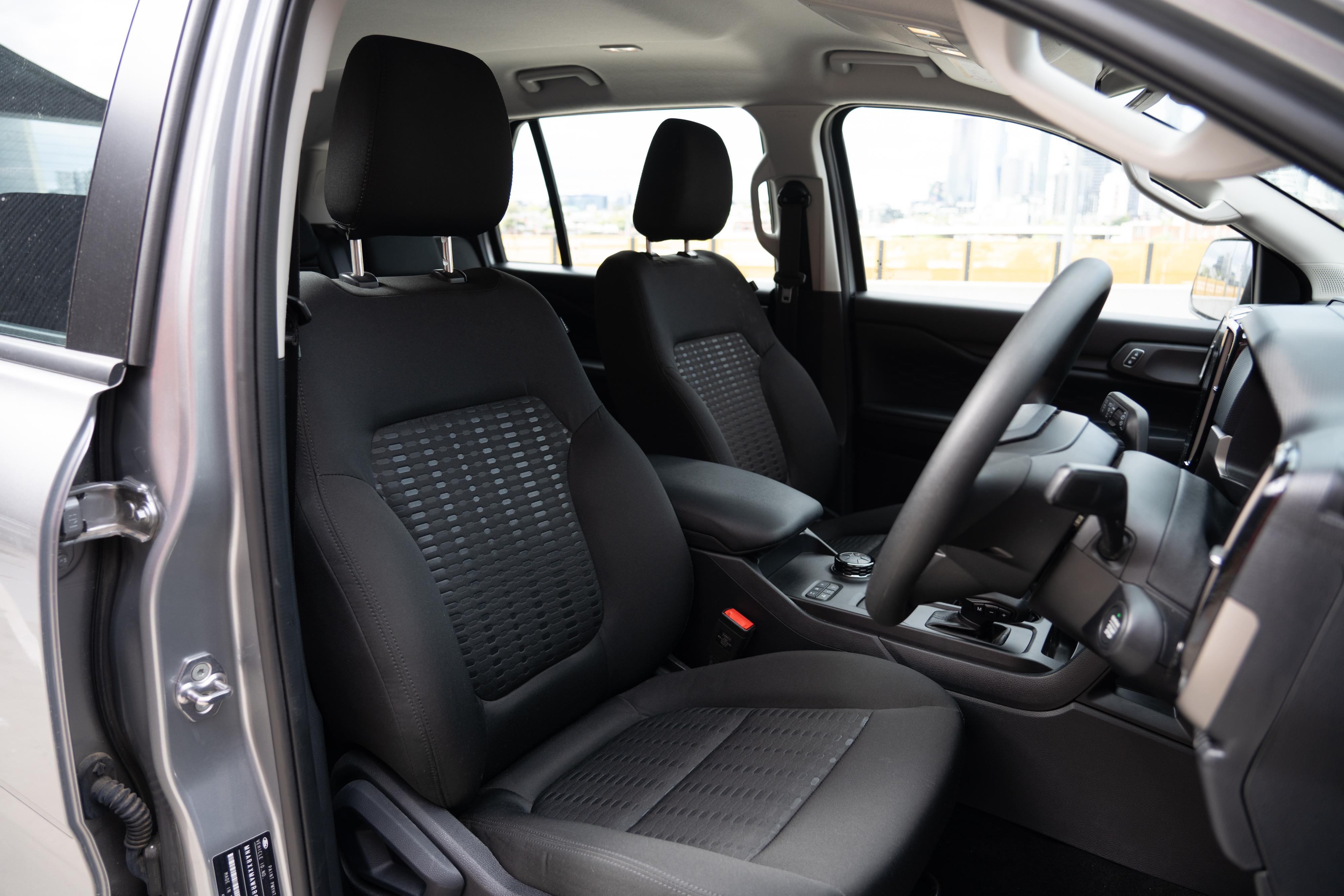
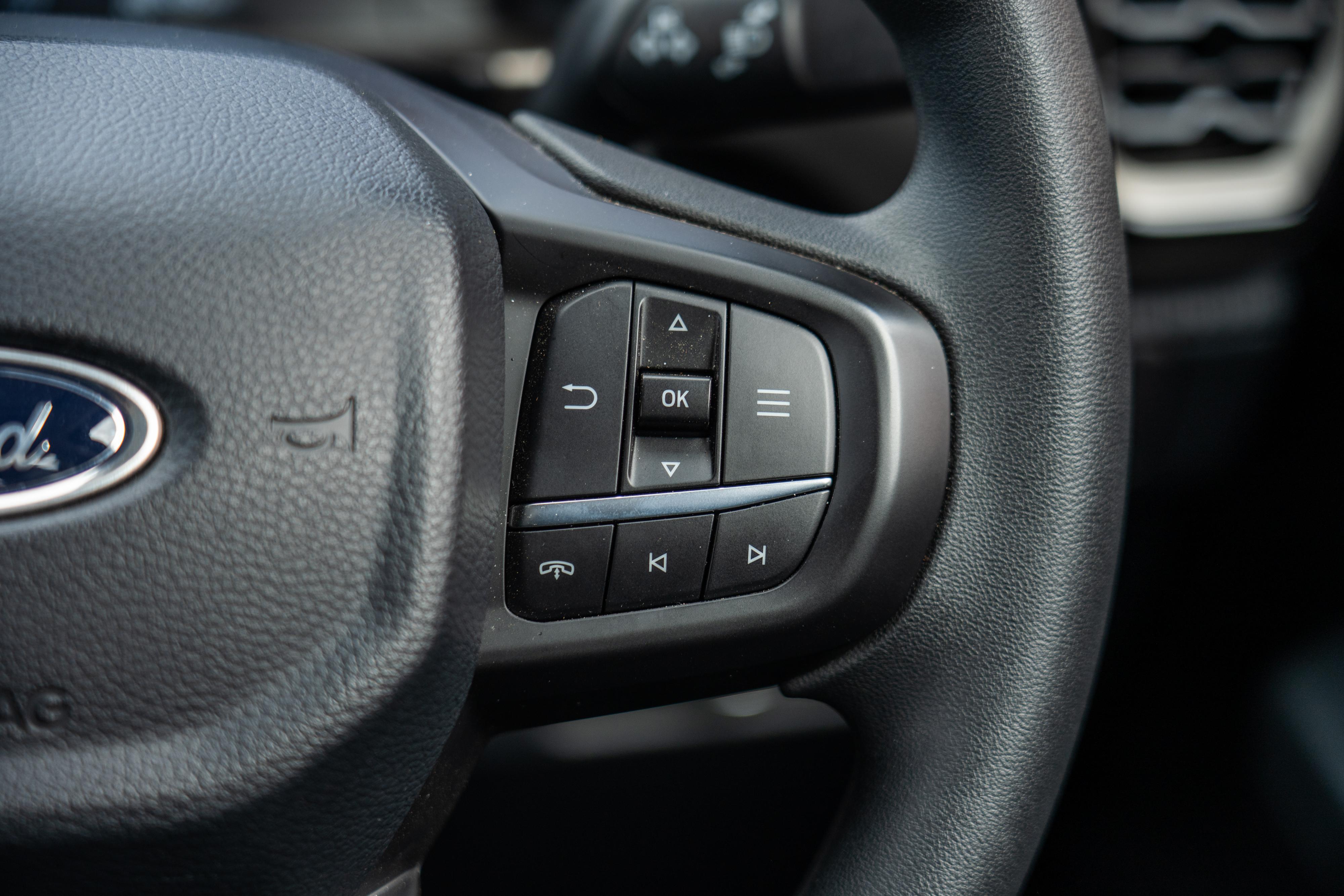
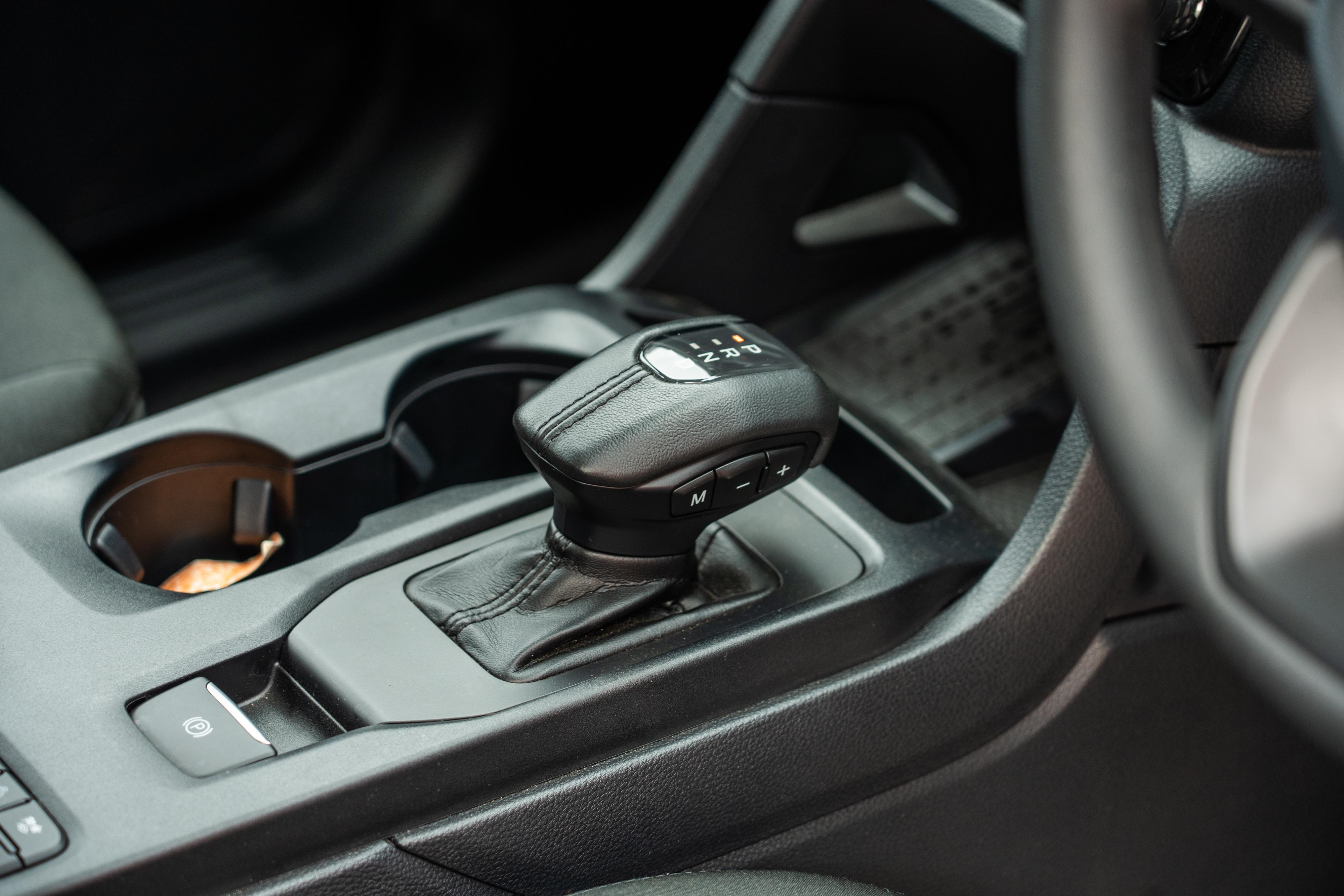
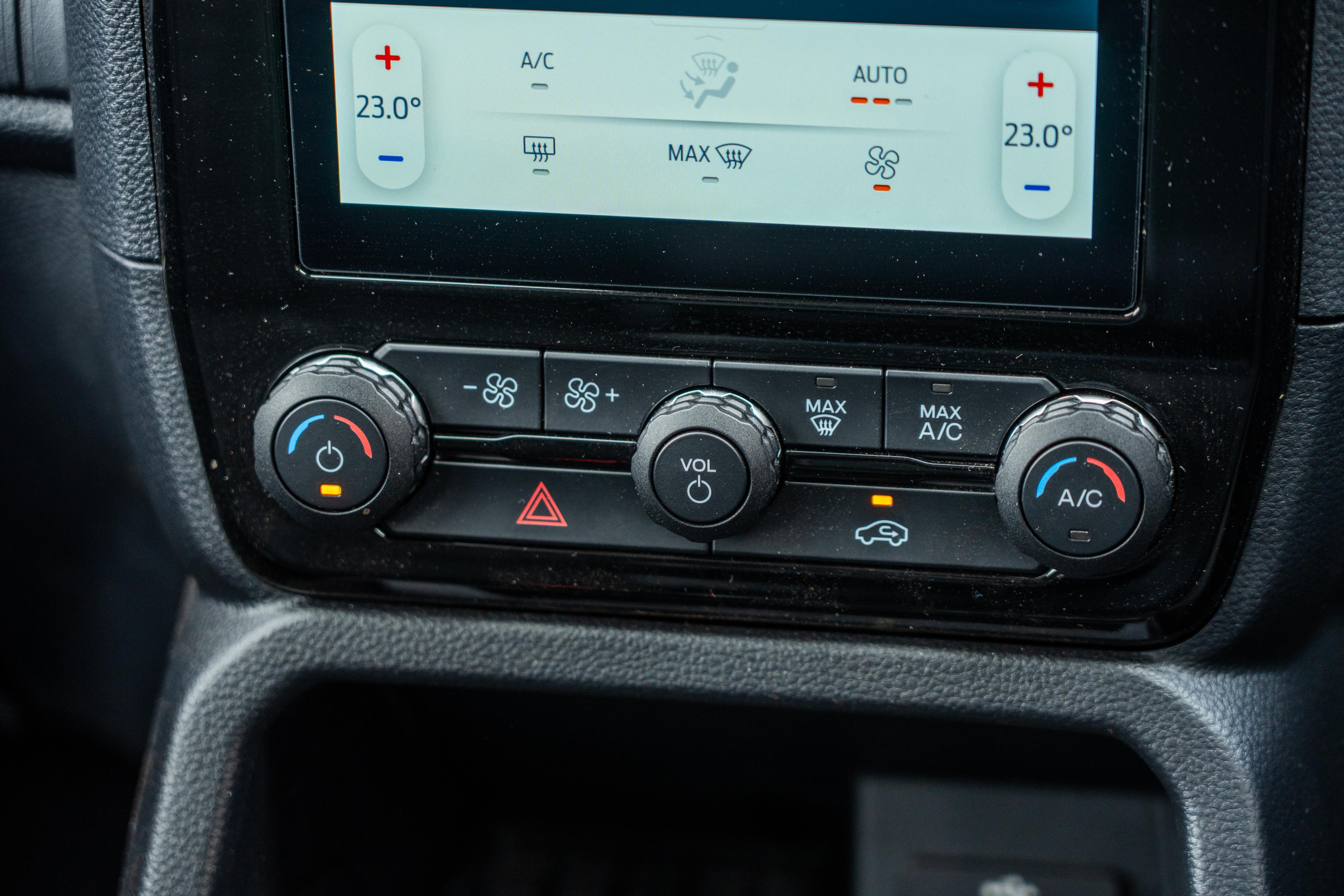
It’s also worth noting there’s a bit of customisation available here, as you can switch between light and dark themes to suit your tastes. There’s also adjustment available for the 8.0-inch digital instrument display, but personalisation still isn’t its strength.
Instead, this simple-looking screen hides a load of menus for all sorts of information, all navigated using the steering wheel buttons. This can make the screen look a little cluttered, and the amount you’re presented with is almost overwhelming.
Otherwise, the cabin is comfortable and functional. Manual seat adjustment shouldn’t be too surprising (though it’s a little disappointing given the price tag), but the front pews are nicely bolstered, and the trim finish isn’t as unfriendly as leather on cold mornings – important given there’s no seat heating.
There’s also plenty of storage, including four cupholders (two that fold out from the dashboard), a central cubby with wireless phone charging and two USB ports, a two-tier glovebox, and a nicely sized centre console storage box that contains a 12V outlet.

The second row leans towards ‘upmarket utilitarian’ in its material choices and amenities, though that comfortable cloth upholstery likely won’t hold up to stains from spill-prone kids unless meticulously maintained.
There’s very little in the way of creature comforts back here, with the only two comfort/convenience measures being rear-facing air vents and a 12V outlet on the back of the centre console. The lack of USB ports here isn’t ideal for families, especially since this is the only Everest variant to omit them.
You do get a soft fold-down armrest with cupholders, as well as other small storage options like map pockets on the front seatbacks.
It’s still a usable space with loads of room all around, but this is where the base-spec positioning becomes a little more obvious. At the risk of harping on about it, this becomes harder to swallow after you’ve forked over more than $60,000 – but at least as the owner you won’t often be the one spending time back here.
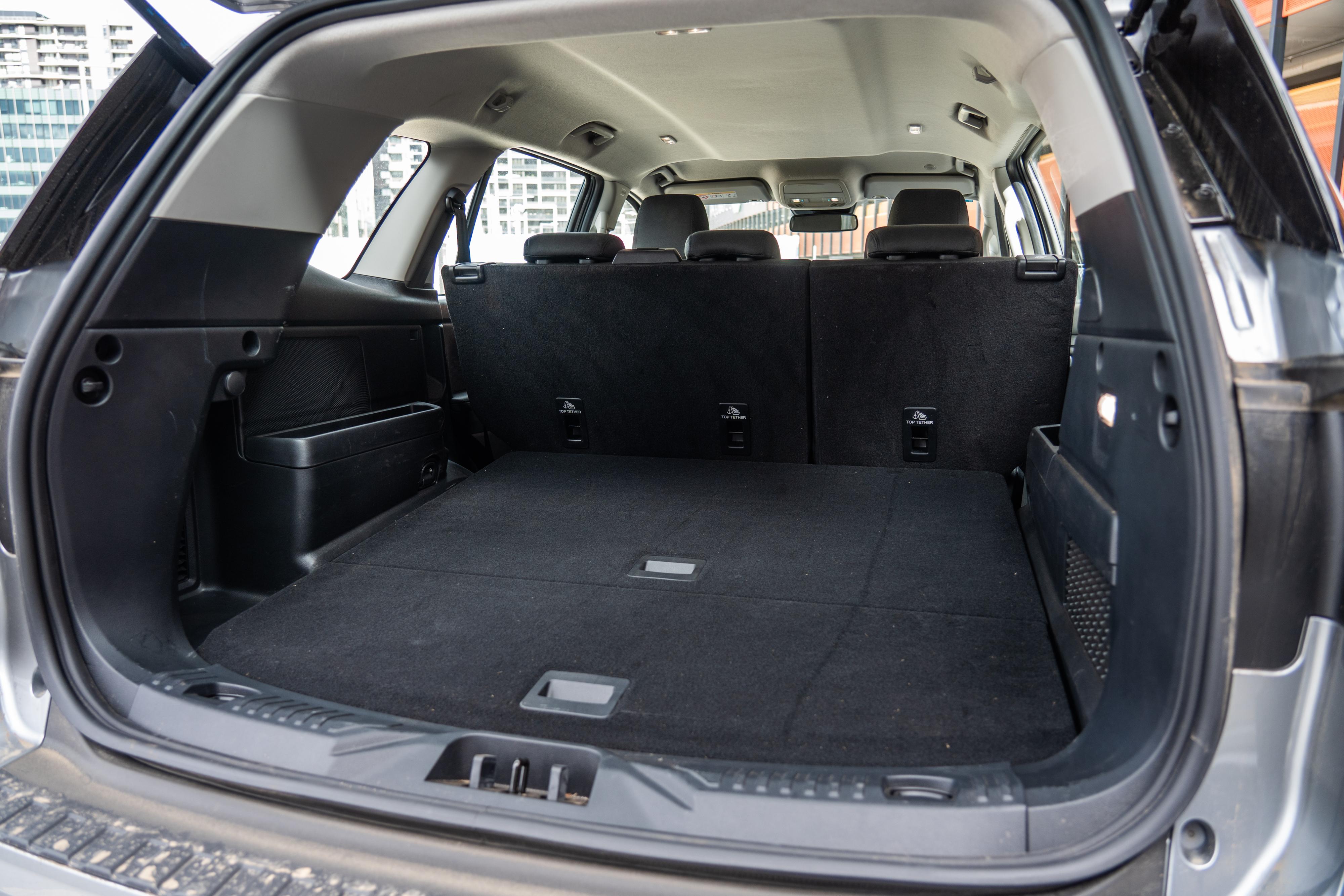
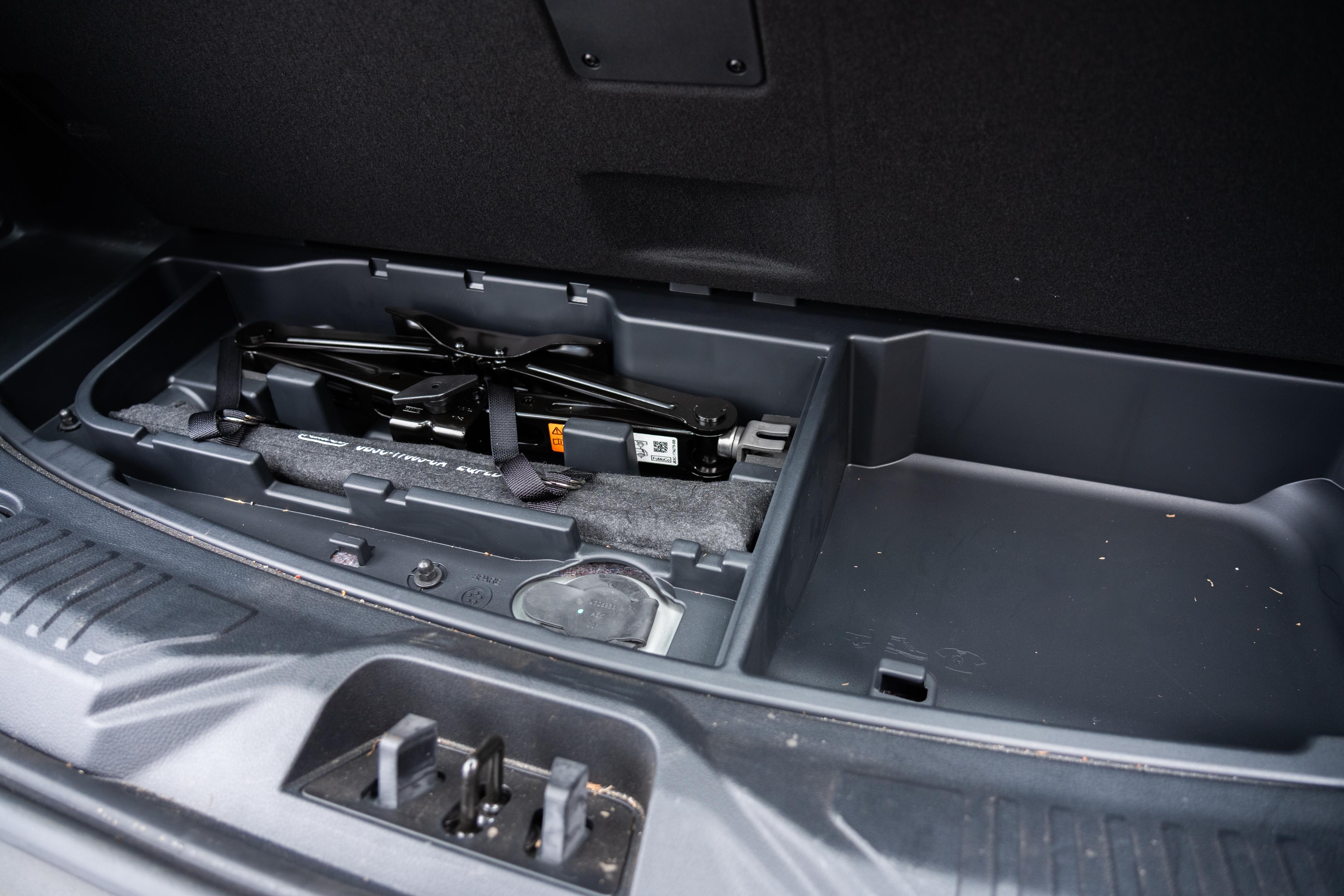
The Everest Ambiente comes standard with a five-seat layout, though you can add a third row for another $1350. This is still significantly cheaper than stepping up to the Trend, which is a seven-seater by default but pushes into the mid-$70,000 range once on-roads are applied.
As our tester is only a five-seater, it offers a colossal boot. In five-seat mode you get 898 litres of space when measured to the roof, which is nevertheless still not as much as the 1119L quoted by Isuzu for the MU-X in the same configuration.
Still, we found the Everest’s boot to be generously sized for most applications, especially with the rear seats folded down. We even took advantage of this capacity to transport an engine crane, and the only limitation was this author’s strength while loading and unloading.
Ford also provides a number of under-floor cubbies for various odds and ends, which is extra storage you won’t get in a seven-seat alternative.
| Dimensions | Ford Everest Ambiente |
|---|---|
| Length | 4940mm |
| Width | 1923mm |
| Height | 1841mm |
| Wheelbase | 2900mm |
| Cargo capacity (VDA, 7-seat models) | 259L (all seats up) 898L (3rd row folded) 1823L (3rd and 2nd rows folded) |
To see how the Ford Everest stacks up against the competition, use our comparison tool
What’s under the bonnet?
The Trend gets Ford’s 2.0-litre four-cylinder bi-turbo diesel engine, the lesser of the two diesel engines available for the Everest. Power is sent to all four wheels through a 10-speed automatic transmission.
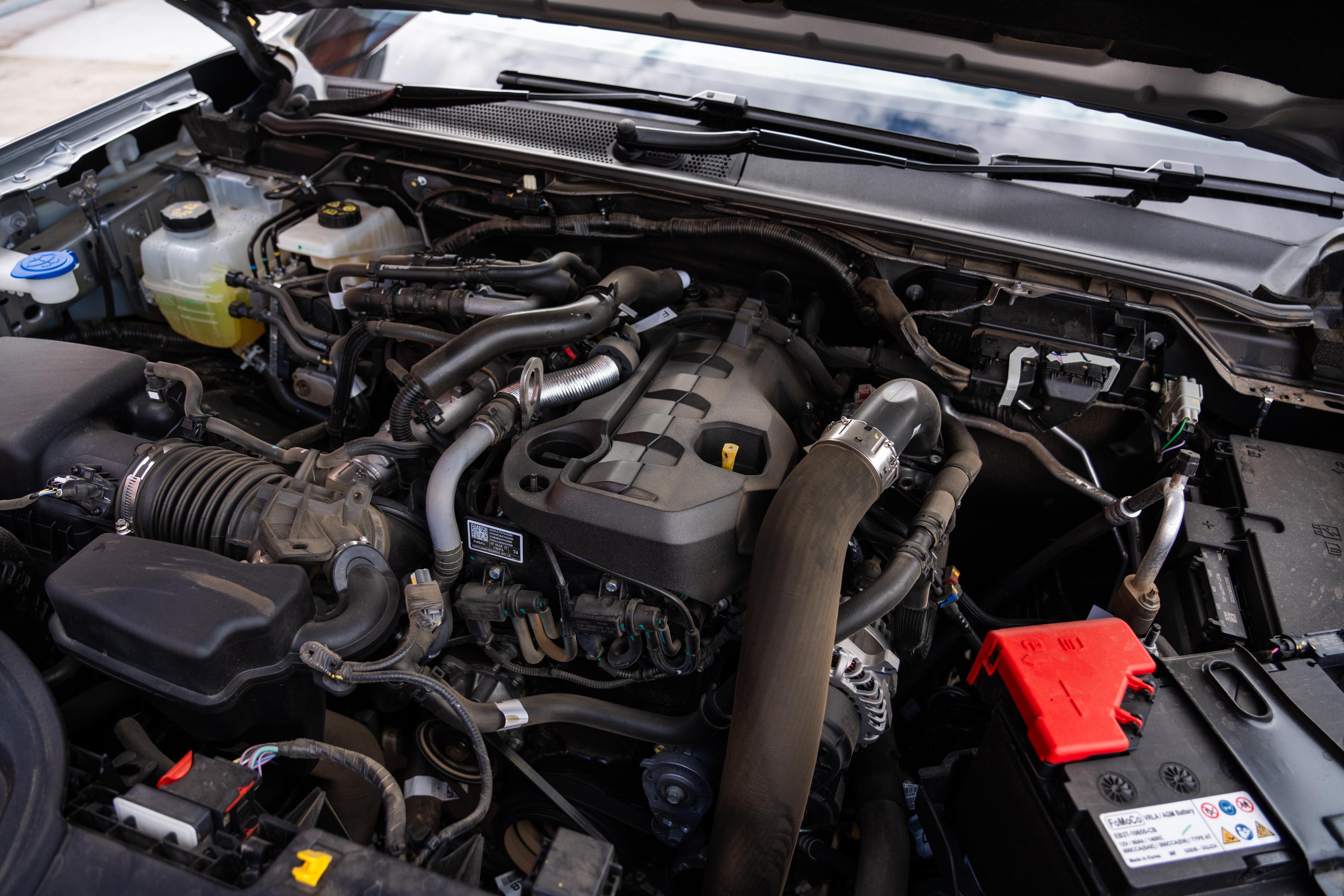
| Specifications | Ford Everest Ambiente |
|---|---|
| Engine | 2.0L 4cyl bi-turbo diesel |
| Power | 154kW @ 3750rpm |
| Torque | 500Nm @ 1750rpm |
| Transmission | 10-speed automatic |
| Drive type | Full-time 4WD with low-range |
| Kerb weight | 2369kg |
| Fuel economy (claimed) | 7.2L/100km |
| Fuel economy (as tested) | 7.4L/100km |
| Fuel tank capacity | 80L |
| Fuel requirement | Diesel |
| CO2 emissions | 190g/km |
| Emissions standard | Euro 5 |
| Payload | 731kg |
| Braked tow capacity | 3500kg |
| Gross vehicle mass (GVM) | 3100kg |
| Gross combination mass (GCM) | 6250kg |
Our week with the car primarily involved freeway driving in heavy traffic, as well as several errand runs in and around town. Unfortunately, we weren’t able to tow, which would have pushed our recorded fuel economy figure well above Ford’s claim.
To see how the Ford Everest stacks up against the competition, use our comparison tool
How does the Ford Everest drive?
Despite its stripped-back presentation, the Ambiente is surprisingly well-mannered on the move.
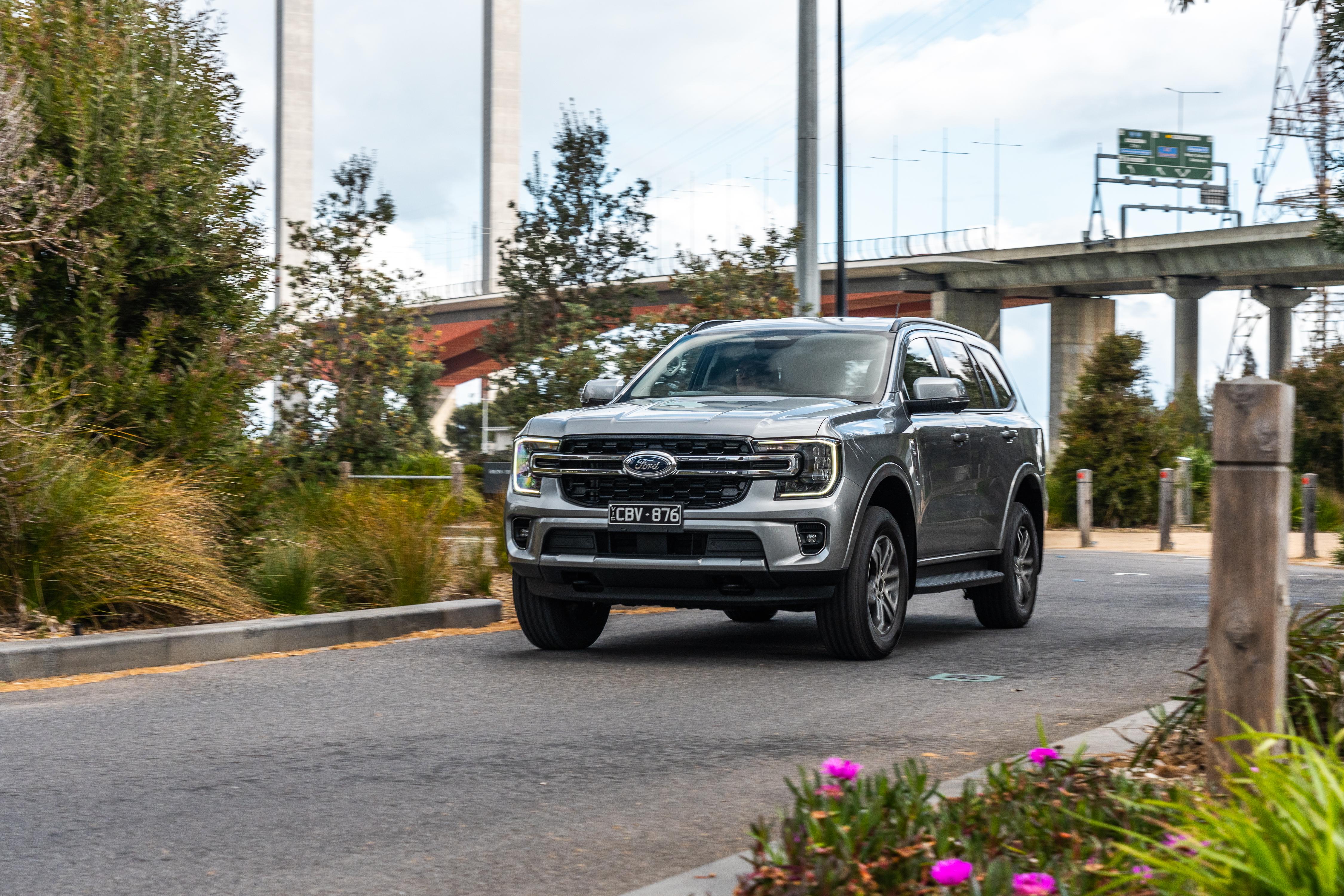
The sound of the bi-turbo diesel chugging away after a cold start might lead you to expect the Everest will be quite agricultural, and to be fair it’d be inaccurate to describe it as refined.
But audible engine noise isn’t overbearing once warm and rolling, which isn’t to say it’s quiet but it sounds and feels almost as hushed and refined as many car-based family SUVs. The Everest does have commercial underpinnings, after all.
Carrying on from its interior though, the Everest drives more nicely than its popular ladder-frame rivals. Because there’s no adaptive suspension, it’d be unfair to compare it against thus-equipped Prados, but alongside base versions of the Prado and MU-X it feels much better sorted.
Large bumps are absorbed nicely, while more minor imperfections are also faithfully ironed out, making for a comfortable drive. This is in part the result of the Ambiente’s relatively small alloys and chunky tyre sidewalls, which also helps contain road noise.
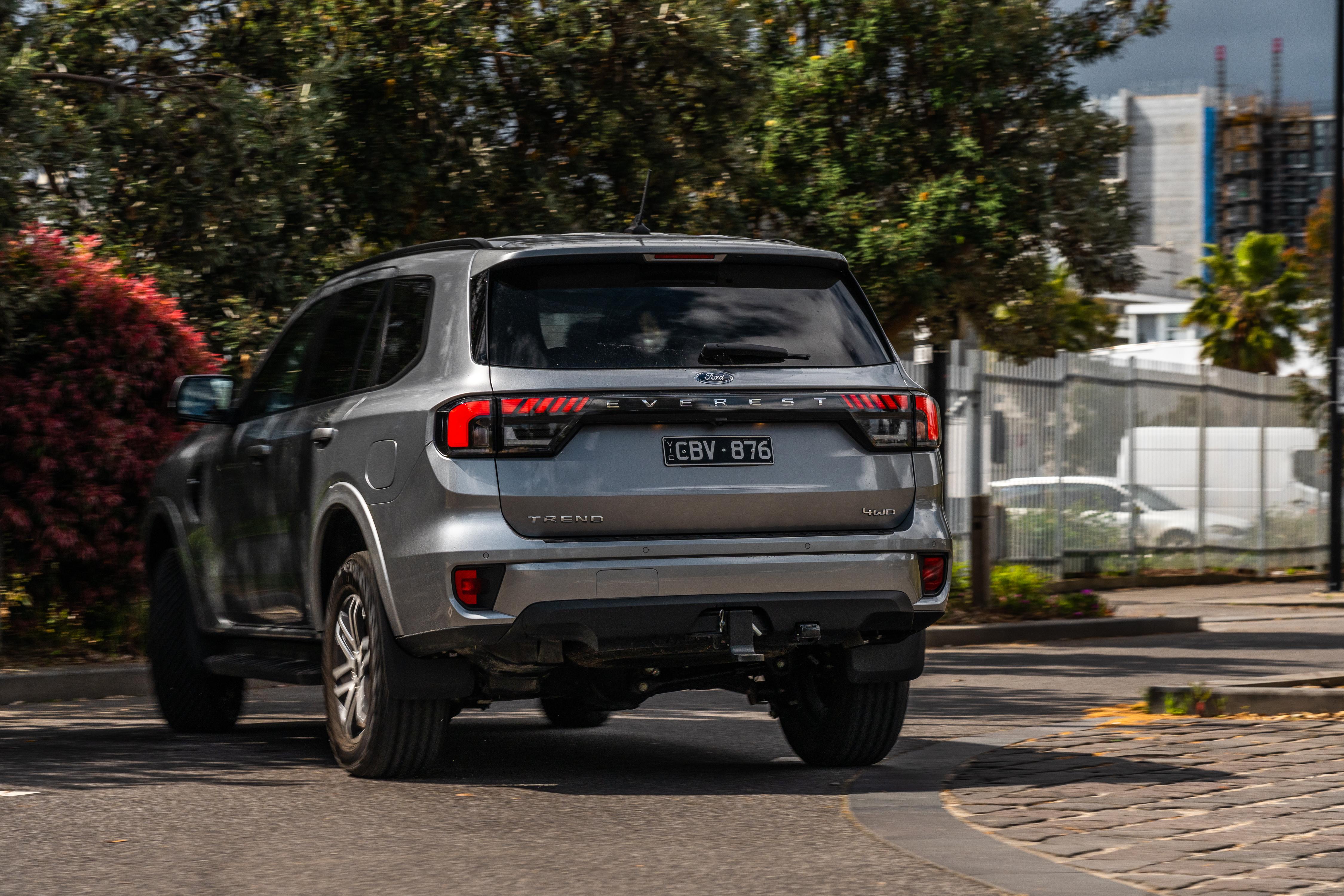
What isn’t as nice is the Everest’s transmission, which is a common complaint of ours when its comes to Fords. There are too many gears, and while they may help reduce fuel consumption and keep the smaller-displacement engine in its sweet spot, it’s not like the bi-turbo’s 500Nm torque output is selling you short.
As we said, it’s the same story with the Ranger, and even the Mustang. The constant shifting during acceleration and even a steady throttle detracts from the solid performance of the bi-turbo, which itself is smooth and consistent.
It’s possible to catch the transmission in the wrong gear, with ‘unexpected’ pedal inputs sometimes leading to hesitation, but it’s generally a very smooth and well-sorted unit. We just wish it had fewer gears – eight to match the MU-X would be appropriate.
But the Everest still offers a comfortable driving experience, arguably making it the most car-like of Australia’s top-selling body-on-frame SUVs. It’s at least much more pleasant than a base-spec Prado.

You also have a couple of drive modes to choose from, though that’s not nearly as many as in the more expensive trims. The main omissions are the more nuanced off-road modes, but the main economy and towing settings are still on hand.
It’s a similar story with the Everest’s dynamics. It’s no sports car, but Ford’s biggest SUV handles relatively well, offering class-leading ride quality, road-holding and stability, both in a straight line and in high-speed bends.
Those chunky all-season tyres don’t offer endless amounts of grip on the road, but they do provide consistent performance in a range of conditions and there’s plenty of mechanical traction. They should also be reasonably handy off-road (such as travelling to a campsite, not rock-crawling nor traversing the Simpson), while being grippier on-road than more aggressive all-terrains.
The steering is also well-calibrated and appropriately weighty, giving you plenty of feedback (for a large SUV) without being sluggish to respond to inputs. Again, everything works together to make the Everest an easy vehicle to drive, even if it does feel big on the road.

Large windows all round also mean visibility is good, supported by Ford’s comprehensive list of safety gear, which is present even in the base Ambiente.
The only real omission is a surround-view camera, as the Ambiente is the only Everest grade for which it’s unavailable in any form. It’s only optional from Trend level and up (bar the Platinum, in which it’s standard), but at least it’s available at base level.
Still, the Ambiente does get Ford’s fully fledged adaptive cruise control system, which we found reliable at following freeway lanes despite the Everest’s size. It’s also competent at adapting to traffic around you, responding appropriately and promptly if traffic is slowing ahead.
Generally speaking, this base Everest is a complete package offering a straightforward driving experience, so much so that it doesn’t feel like a base model at all.
For a more detailed look at the Everest’s off-road performance, check out our video review below:
| Off-road dimensions | Ford Everest Ambiente |
|---|---|
| Track front and rear | 1620mm |
| Ground clearance | 229mm |
| Approach angle | 30.4º |
| Departure angle | 25.3º |
| Ramp breakover angle | 22.2º |
| Wading depth | 800mm |
To see how the Ford Everest stacks up against the competition, use our comparison tool
What do you get?
There are five permanent variants in the Everest lineup.

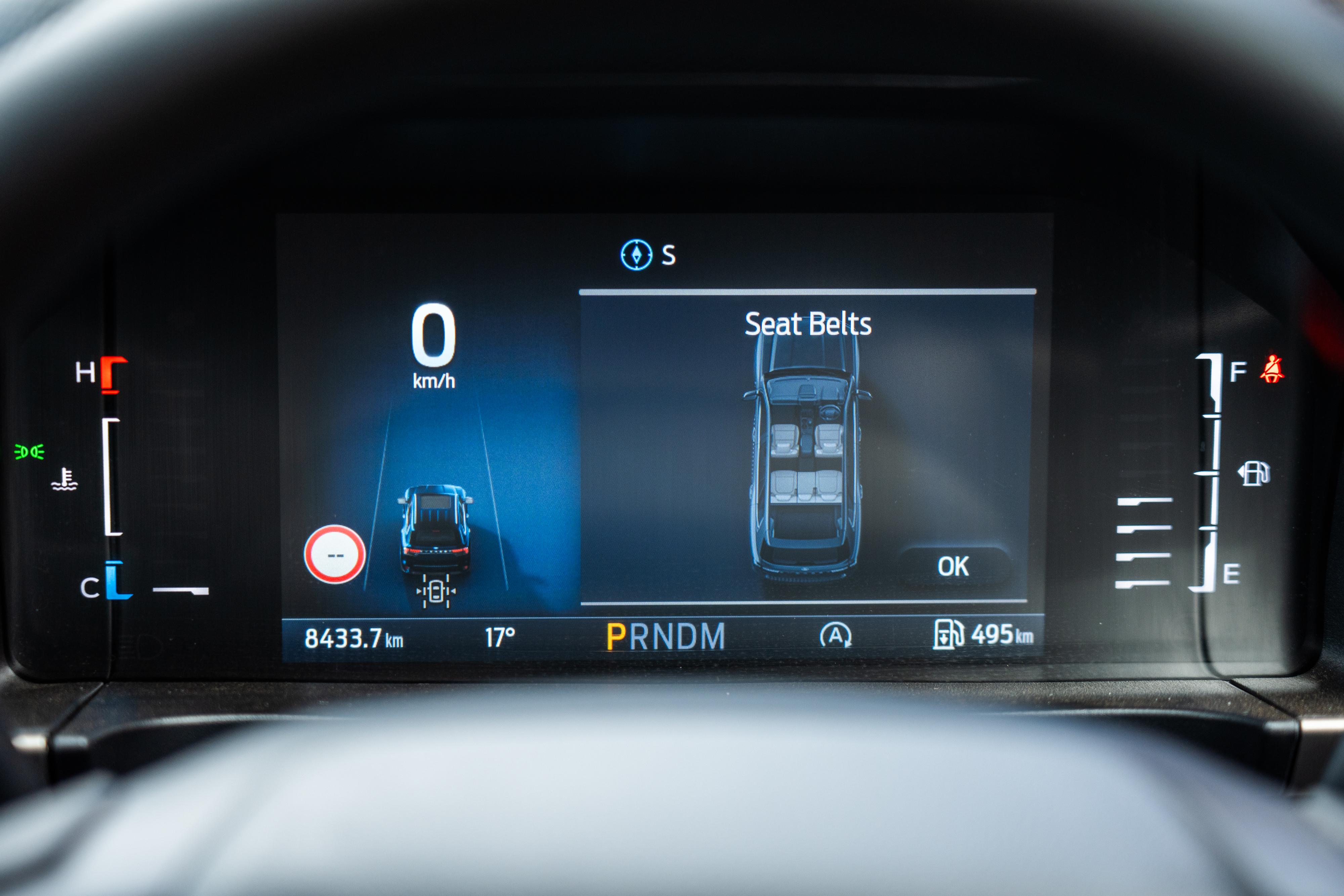
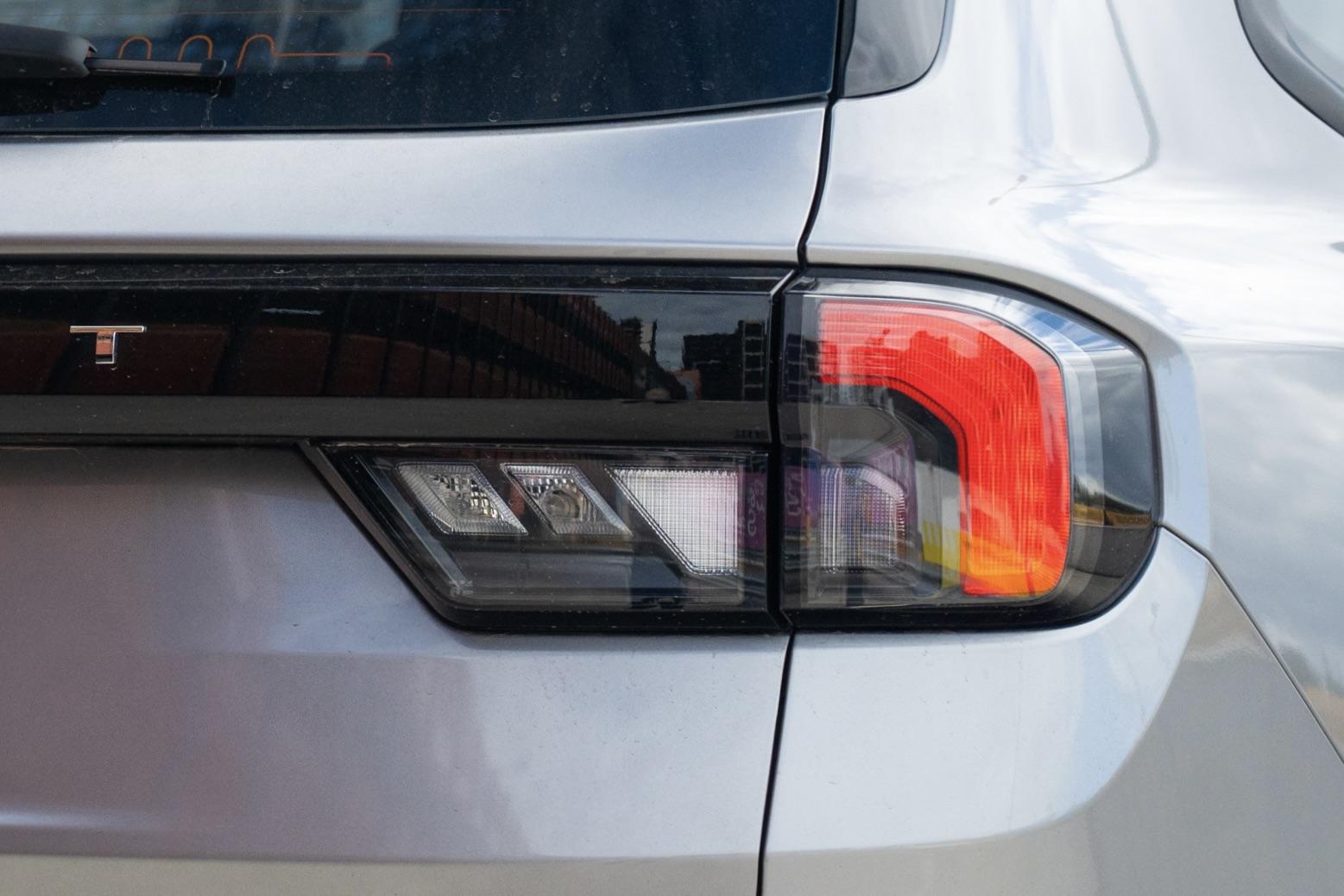
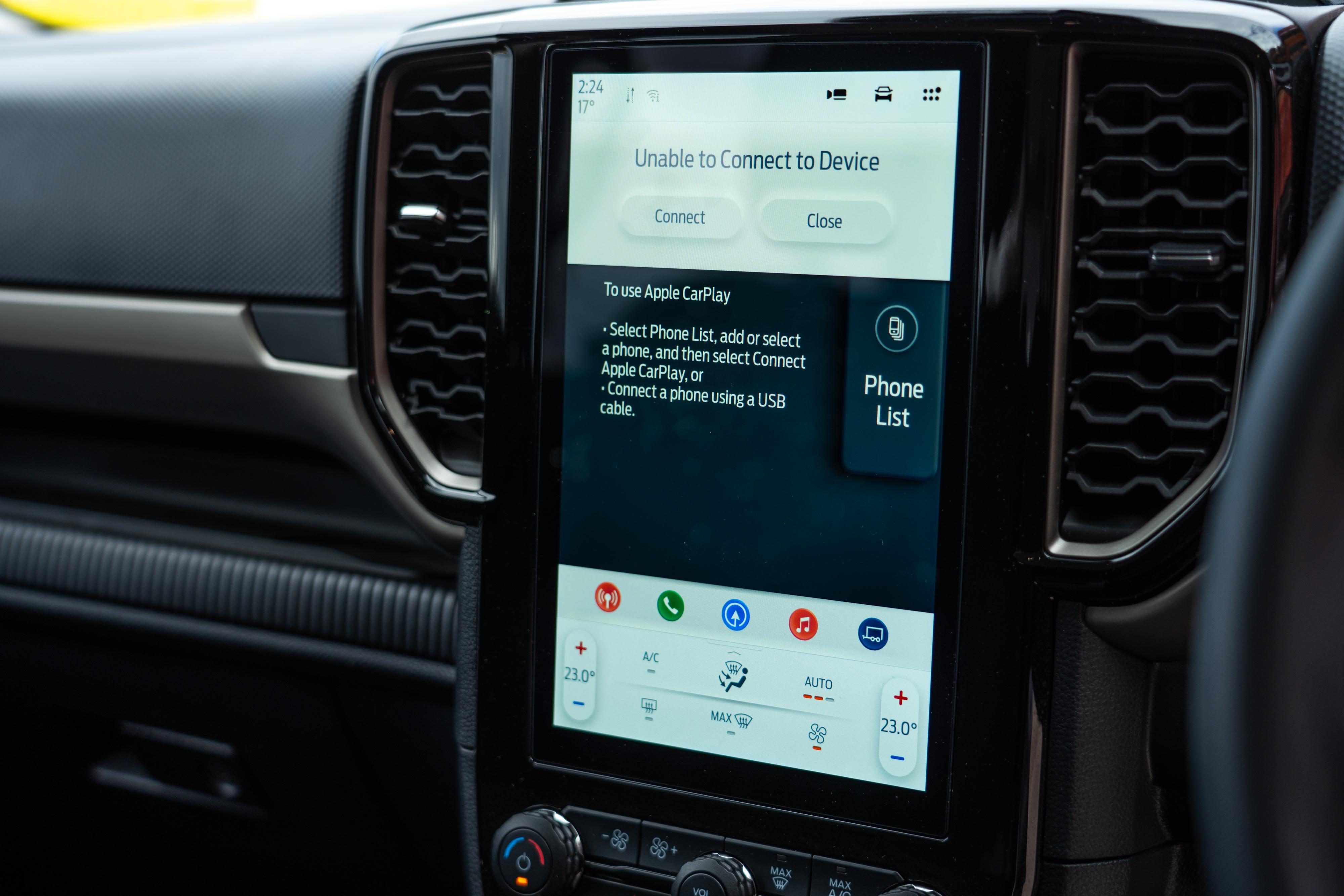
2026 Ford Everest Ambiente equipment highlights:
- 17-inch alloy wheels
- All-season tyres
- 17-inch steel spare wheel
- LED reflector headlights
- C-shaped LED daytime running lights
- Front fog lights
- LED tail-lights
- Black side steps
- Power-folding exterior mirrors
- Rain-sensing wipers
- Two front tow hooks
- Acoustic windscreen
- Steel underbody protection (4×4 model only)
- 10.1-inch Sync4 touchscreen infotainment system
- 8.0-inch digital instrument cluster
- Wireless Apple CarPlay and Android Auto
- Embedded modem
- Wireless phone charger
- Eight-speaker sound system
- Satellite navigation
- DAB+ digital radio
- Embedded voice assistant
- FordPass with remote start
- Dual-zone climate control
- Five seats (seven seats optional)
- Fabric upholstery
- Eight-way manual driver seat adjustment
- Four-way manual front passenger seat adjustment
- Driver floor mat
- Electrochromatic rear-view mirror
- Dash-mounted pull-out cupholders
- Open storage shelf
- Tilt and reach steering wheel adjustment
- Keyless entry with push-button start
- Vinyl console lid
- Electronic parking brake
- Conventional mechanical gear shifter (4×2 only)
- e-Shifter gear shifter (4×4 only)
- Locking rear differential (4×4 only)
- Push-button selectable drive modes
Everest Trend adds:
- 18-inch alloy wheels with matching spare
- 400-watt power inverter
- Privacy glass
- Power tailgate
- Heated, power-folding side mirrors with puddle lamps
- 12-inch Sync4 touchscreen infotainment screen
- Seven seats
- Leather-accented upholstery
- Eight-way power driver’s seat
- Leather-wrapped steering wheel
- Driver and passenger floor mats
- Upper glove box
- Off-road screen (4×4 models only), which shows:
- Driveline and electronic diff lock indication
- Steering angle
- Vehicle pitch and roll angles
- Off-road features button
- Rotary drive mode selector (4×4 models only)
- Sand, Mud/Ruts drive modes
- Black stand-off roof rails
- Zone lighting
Everest Sport adds:
- 20-inch black alloy wheels with matching spare
- Black exterior accents
- Unique leather-accented upholstery with ‘SPORT’ embossing
- Unique interior colour accents
- 10-way power driver’s seat with memory
- Eight-way power passenger seat
- Heated and ventilated front seats
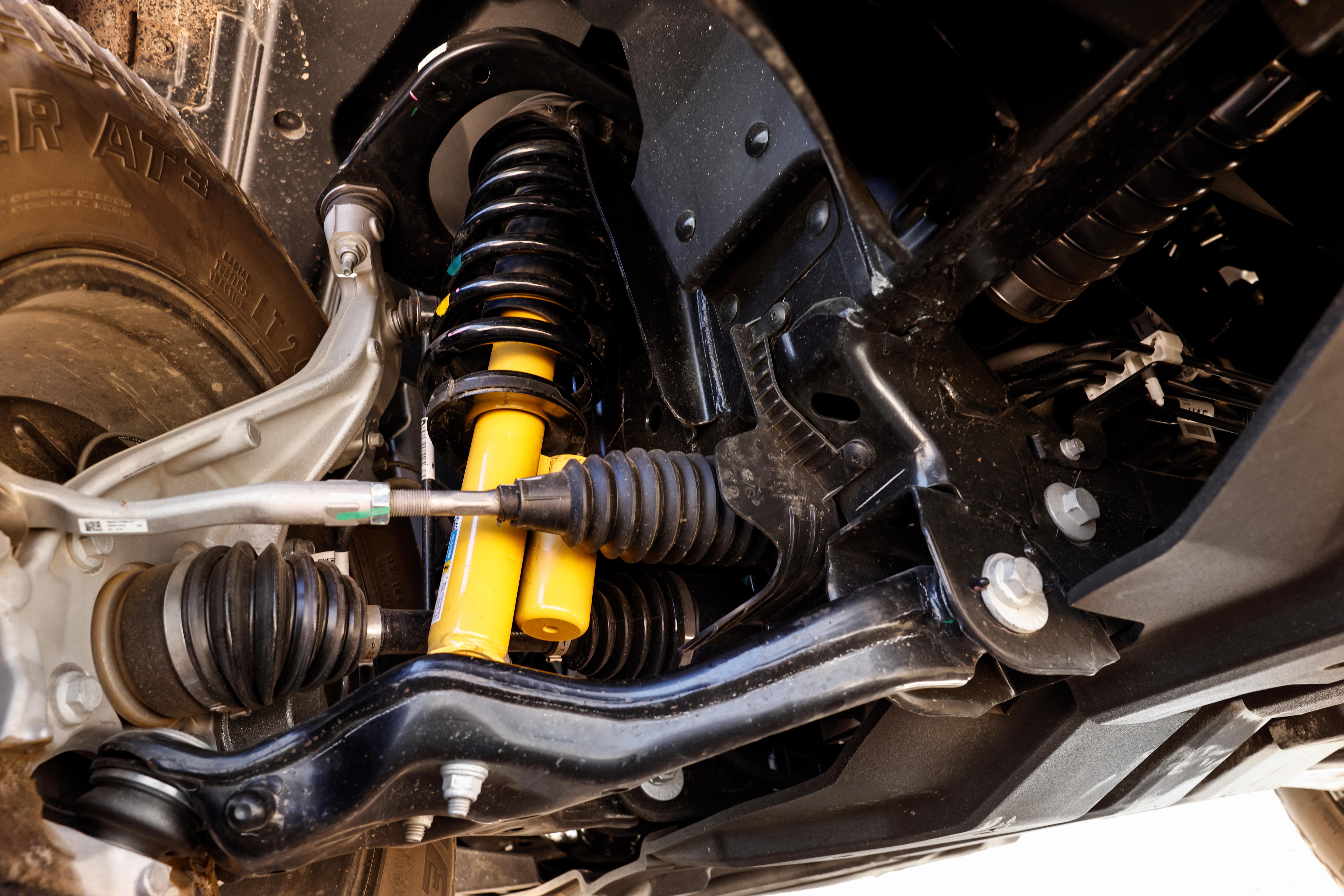
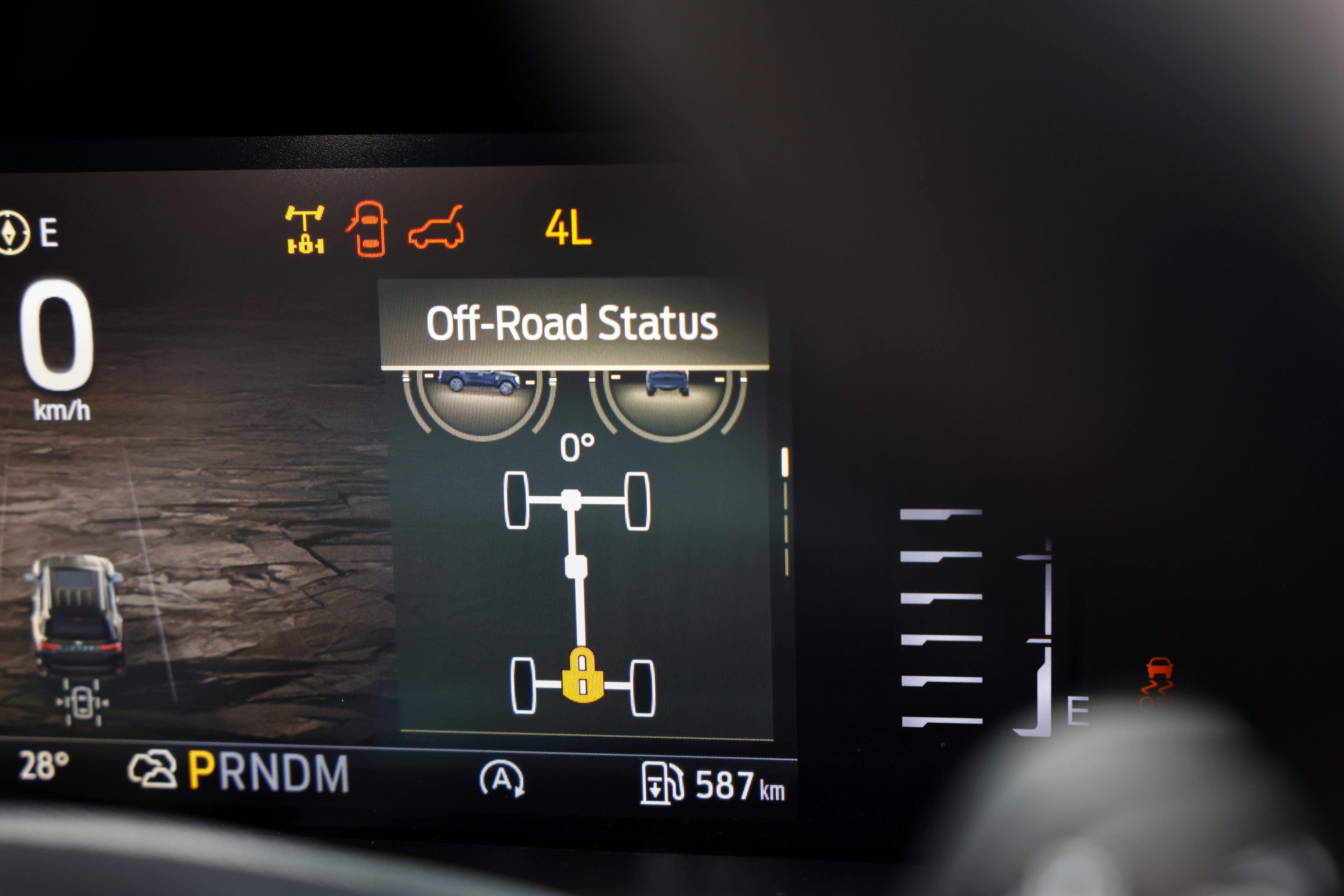
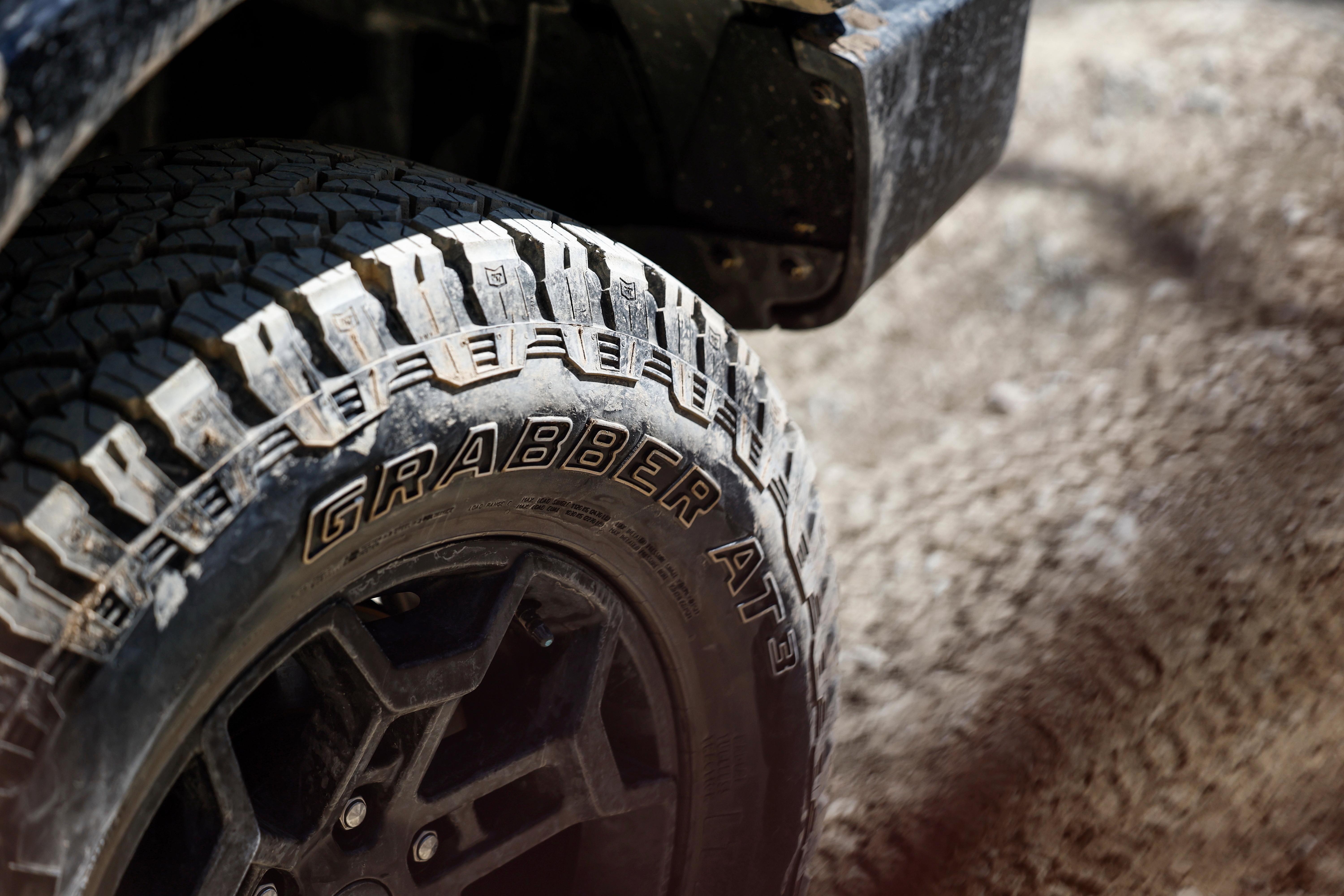
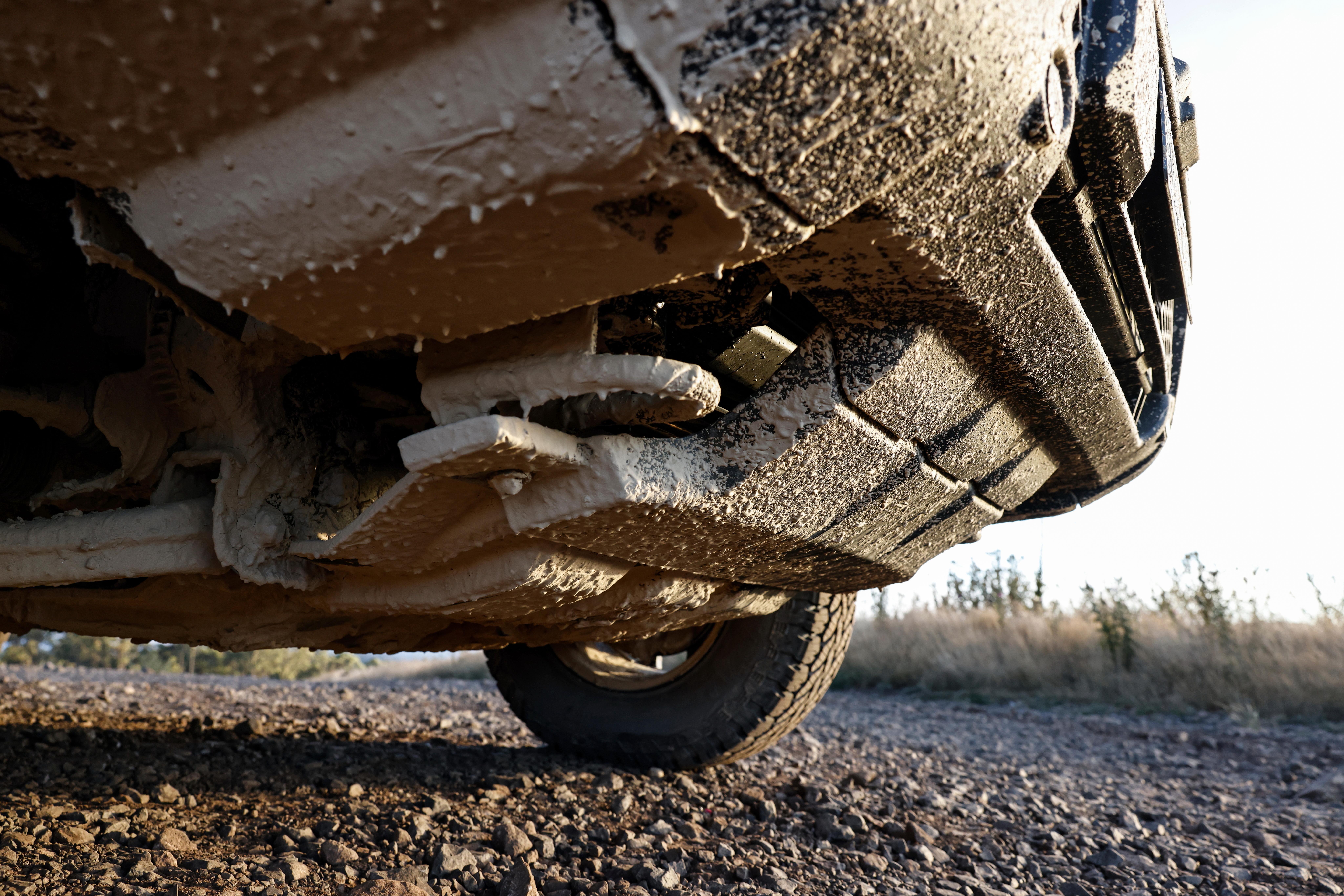
Everest Tremor adds:
- General Grabber AT3 all-terrain tyres
- Unique honeycomb grille with auxiliary LED lamps
- Steel bash plate
- Heavy-duty side steps
- Orange Tremor badging
- Bolder Grey wheel arch mouldings
- Bilstein position-sensitive dampers
- ‘Rock crawl’ drive mode
- Tremor-embossed seats
- Ebony-coloured accents
- All-weather floor mats
Everest Platinum adds (over Sport):
- 21-inch alloy wheels with matching spare
- Black-painted roof
- Satin chrome exterior accents
- Matrix LED headlights with auto-levelling
- 12.4-inch digital instrument cluster
- 12-speaker B&O premium sound system
- Surround-view camera
- Tyre pressure monitoring
- Satin chrome interior accents
- Quilted leather-accented upholstery
- Heated second row seats
- Power-folding third row seats
- Heated steering wheel
- Premium front and rear floor mats
- Interior ambient lighting
To see how the Ford Everest stacks up against the competition, use our comparison tool
Is the Ford Everest safe?
The Ford Everest boasts a five-star ANCAP safety rating, based on testing conducted on the Ford Ranger in 2022.
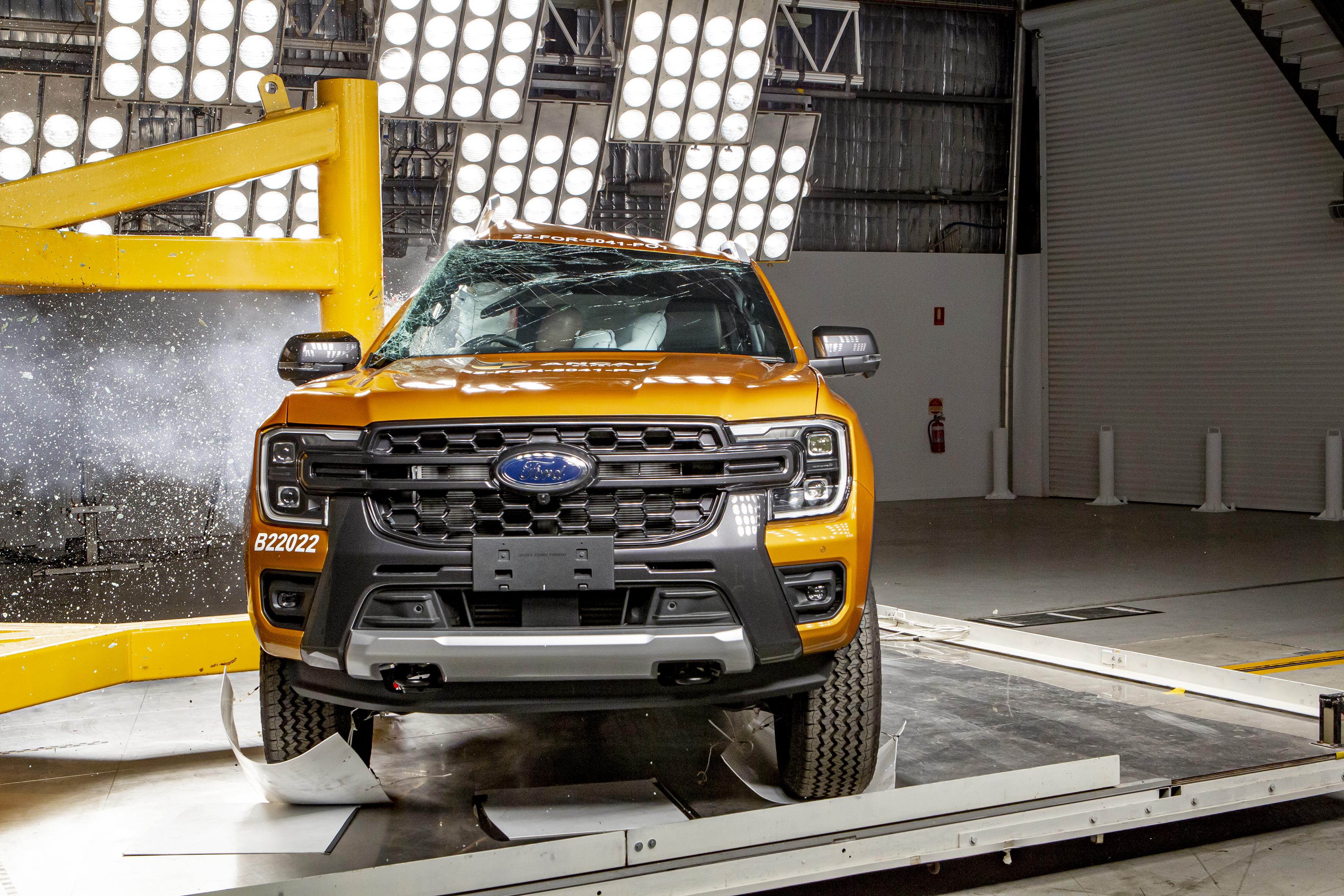
| Category | Ford Everest |
|---|---|
| Adult occupant protection | 86 per cent |
| Child occupant protection | 93 per cent |
| Vulnerable road user protection | 74 per cent |
| Safety assist | 86 per cent |
Standard safety equipment highlights:
- 9 airbags
- Autonomous emergency braking (AEB)
- Blind-spot monitoring
- Driver attention alert
- Front and rear parking sensors
- Hill descent control
- Intelligent adaptive cruise control with stop/go
- Lane centring
- Lane departure warning
- Lane-keep assist
- Post-impact braking
- Traffic sign recognition
- Reverse AEB
- Reversing camera
The Everest Tremor adds tyre pressure monitoring, while the Platinum is the only grade to get a surround-view camera as standard. The latter is available as an option from Trend level and up, as part of the $2900 Touring Pack.
To see how the Ford Everest stacks up against the competition, use our comparison tool
How much does the Ford Everest cost to run?
The Everest is backed by Ford Australia’s five-year, unlimited-kilometre warranty. Servicing is required every 12 months or 15,000km, whichever comes first.
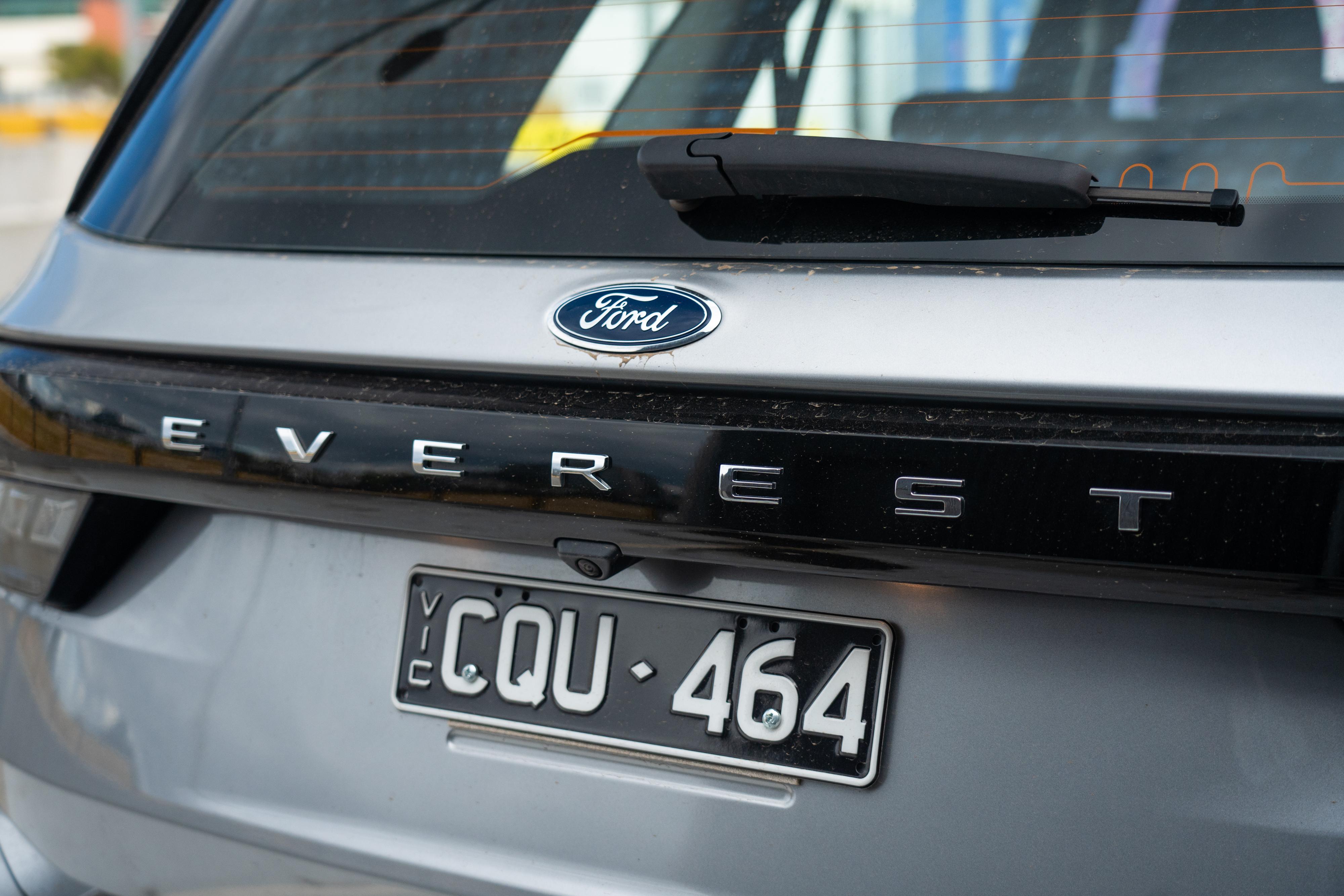
| Servicing and Warranty | Ford Everest |
|---|---|
| Warranty | 5 years, unlimited kilometres |
| Roadside assistance | 12 months, then service-activated up to 7 years |
| Service intervals | 12 months or 15,000km |
| Capped-price servicing | 5-year pre-paid plan |
| Total capped-price service cost | $1596 |
That $1596 price covers MY26 Everests. MY25.50 vehicles, meanwhile, can be covered by the same pre-paid plan for $1516.
For context, Isuzu outlines the same service intervals for the MU-X, while also offering five years of capped-price servicing. Each service is capped at $469, totaling $2345 over five years.
The Toyota Prado, meanwhile, requires servicing every six months or 10,000km. According to Toyota’s website, the first 10 services (five years’ worth) are capped at $390 each, totalling $3900.
To see how the Ford Everest stacks up against the competition, use our comparison tool
CarExpert’s Take on the Ford Everest Ambiente
We went into our week with this Everest with the bar set relatively low, but it seems we grossly underestimated the package offered by the base Ambiente.
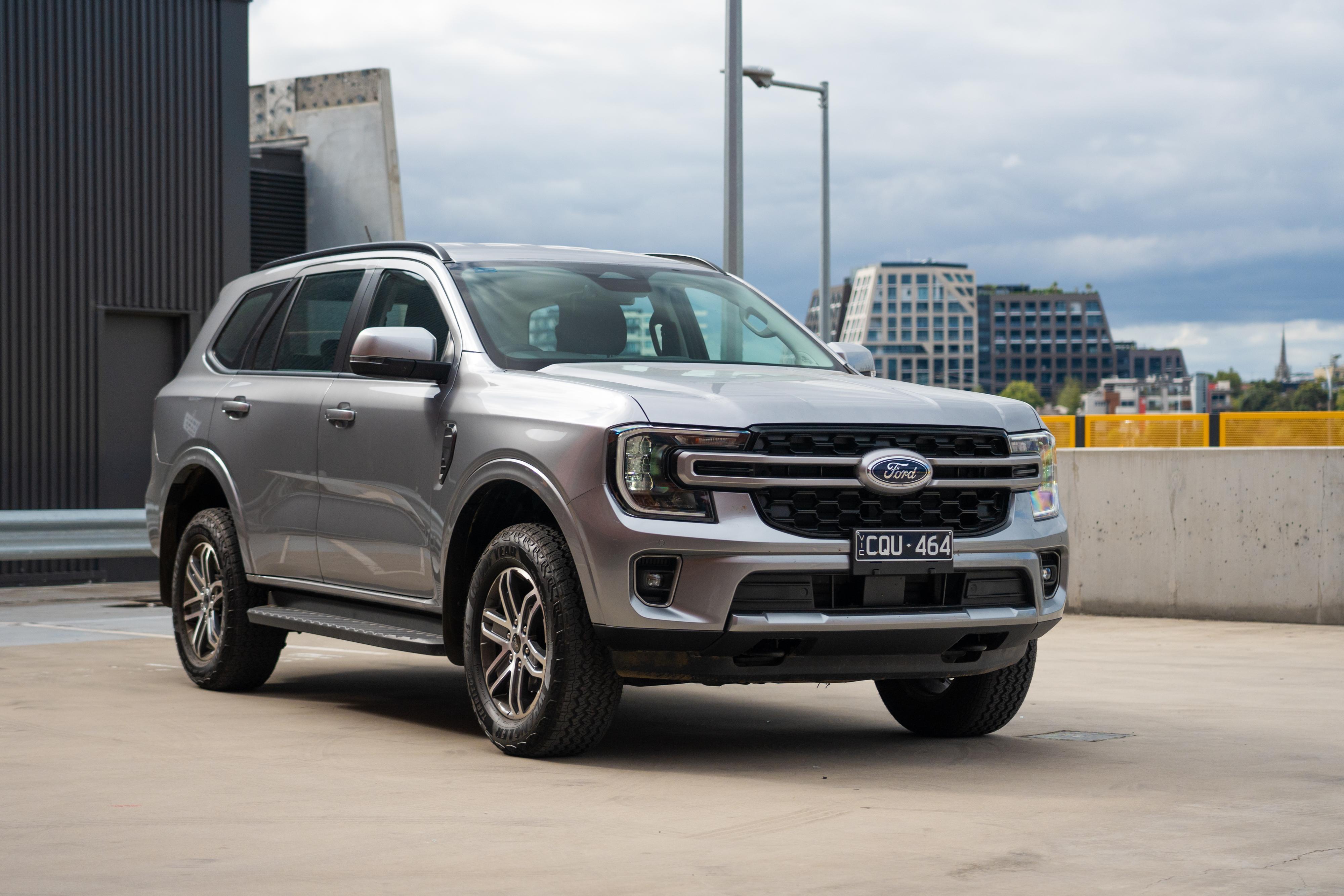
Human nature generally makes us attracted to shiny new things, so getting behind the wheel of an Ambiente is not nearly as enticing as being handed the keys to a Platinum. But to Ford’s credit, the more we lived with it, the more we appreciated the cheapest Everest.
You tend to ignore the plastic surfaces and smaller screens when everything feels nicely put together and functional. As such, the reliable software and generally sturdy construction make the Ambiente cabin a pleasant place to be – even the plastic steering wheel isn’t too unpleasant.
Then there’s the bi-turbo engine, which offers solid performance despite being a little more agricultural than the more refined V6 alternative. It’s still a shame it’s being phased out, and it’s unlikely the V6 will be offered below Trend level.

Indeed, the 10-speed transmission is our only real drivetrain complaint. Even if it’s smooth and works well, the constant shifting is hard to ignore once you notice it.
Still, it’s offset by a cushy ride and confident steering, which makes the Everest comfortable, stable and unintimidating behind the wheel, despite its family-friendly dimensions and round-Australia capabilities.
Of course, the price increase makes the MU-X a better bargain, but the practicality and ease of use provided by the Everest are difficult to match, making even the most stripped-back version well worth a look.

CarExpert can save you thousands on a new Ford Everest. Click here to get a great deal.
Click the images for the full gallery

